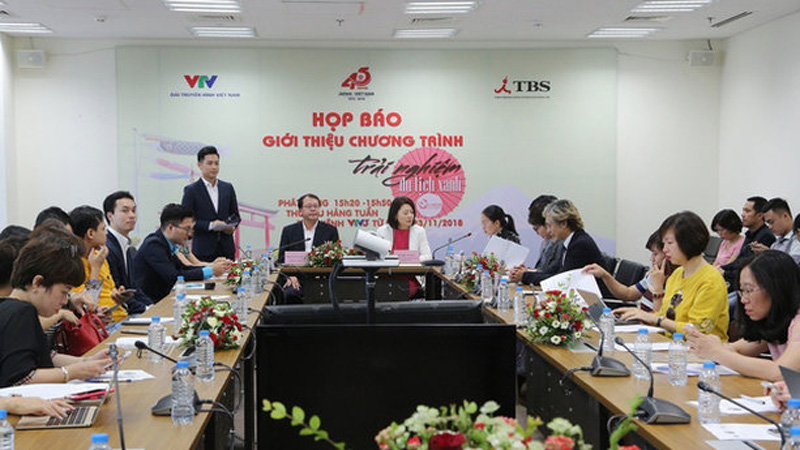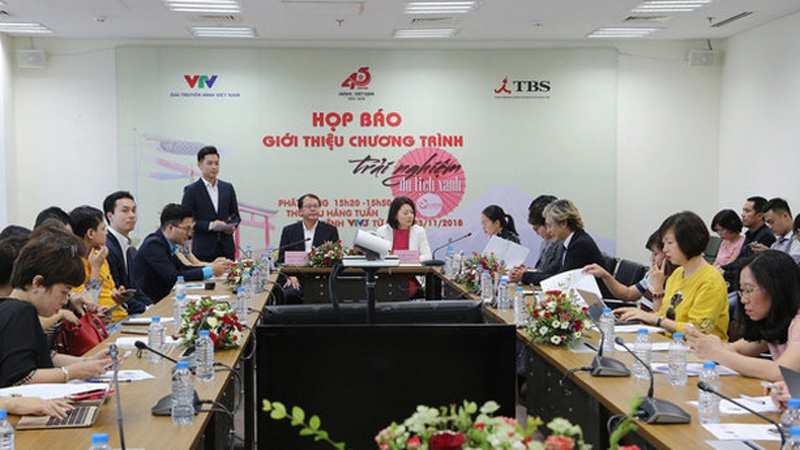
The programme titled ‘Colours of Japan – Experience of green tourism’ will be aired at 3:20pm every Friday on VTV3, of Vietnam Television (VTV), from November 23.

The press conference
on the programme.
The five-episode programme is jointly produced by the VTV
and the Tokyo Broadcasting System (TBS), aiming to celebrate the 45th
anniversary of the establishment of ties between Vietnam and Japan.
The programme will introduce Vietnamese audiences to nature
and clean energy as well as self-contained production processes addressing
environmental protection and sustainable development in Japan.
The programme was divided into five episodes titled
‘Experience of catching octopus in Kanagawa province’, ‘Experience of making
traditional pottery in Nagasaki’, ‘Experience of cooking in Nouhaku’, ‘Experience
of fishing net pulling in Wakayama’, and ‘Experience of Onsen bathing in Oita’.
The two characters involved in the experience are editor Le
Bao An and actress Le Chi, who visited Japan for the first time. They get
closer to Japanese culture and help Vietnamese audiences to know more about the
nature and the simple life of Japanese people.
The previous series of ‘Colours of Japan’ were
broadcast in 2016, 2017 and January 2018.
Source: NDO
The People’s Committee of Lac Son district held a ceremony on April 28 to receive the provincial relic certificate for the ancient rock carving site at Suoi Co stream, located in My Thanh commune.
A special music show titled "The country is in the fullness of joy” has been held at Hoa Binh Square in Hoa Binh city in celebration of the 50th anniversary of the liberation of the South and national reunification (April 30, 1975–2025).
The People's Committee of Lo Son commune, Tan Lac district, has organised the local annual traditional stream fishing festival on April 19 - 20.
As a land deeply intertwined with human history and Vietnam’s millennia-long journey of nation-building and defence, Hoa Binh is often revered for its epic tales and legends.
Residents of Hoa Binh boast a rich cultural identity, reflected in their unique language, traditional attire, customs, and folk melodies – described as "sweet as honey, clear as a mountain stream.”
Lac Son district’s Vu ban town held the 2025 Truong Kha temple festival on April 12–13 (the 15th–16th days of the third lunar month). Since its revival in 2019, the festival has been organised every three years, preserving valuable intangible heritage while meeting the community’s cultural and spiritual needs.



